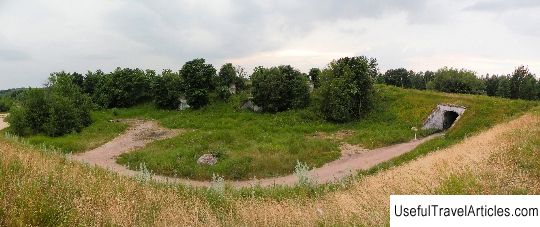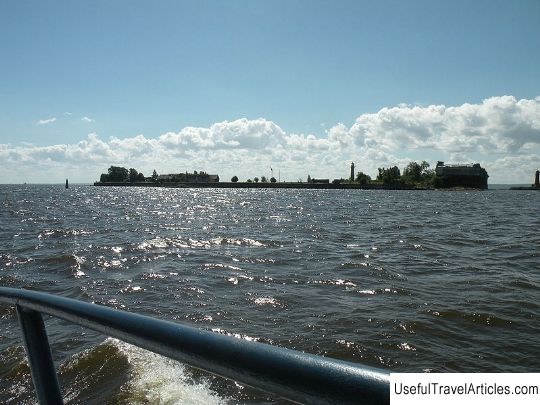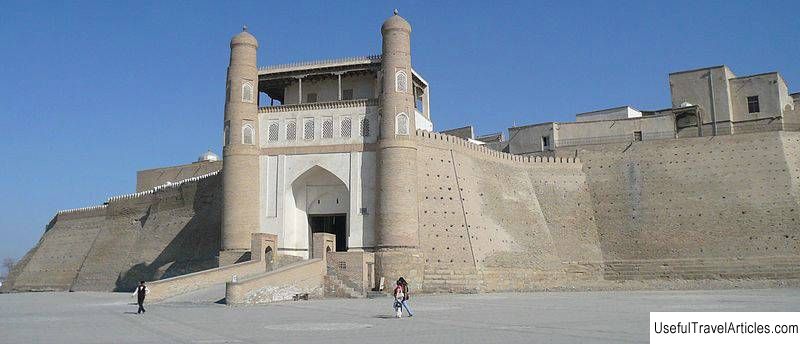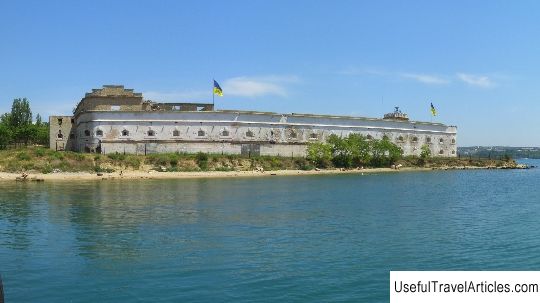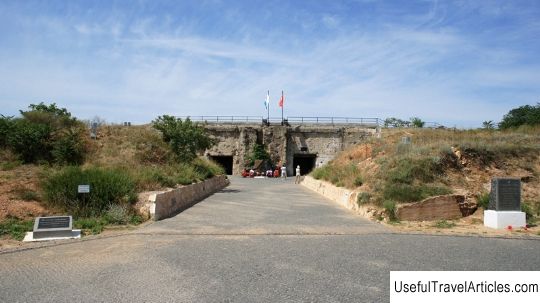Fort Grand Duke Constantine description and photos - Russia - St. Petersburg: Kronstadt
Rating: 8,1/10 (254 votes) 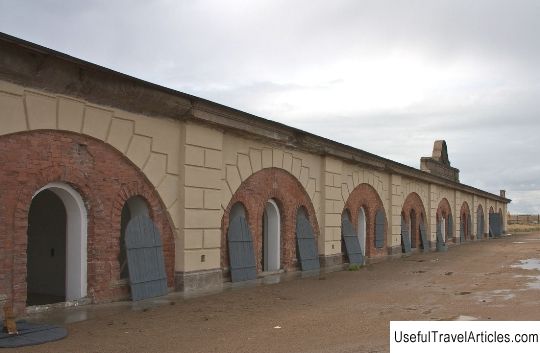
Fort "Grand Duke Constantine" description and photo - Russia - St. Petersburg: Kronstadt. Detailed information about the attraction. Description, photos and a map showing the nearest significant objects. Photo and descriptionFort "Grand Duke Constantine" is one of the artillery forts defending the southern harbors of Kronstadt. It is one of the largest forts in the city. In 1808, due to the outbreak of hostilities by the British fleet in the Baltic Sea, the Naval Department decided to build a wooden battery called "Double South". She was armed with 37 cannons and 12 unicorns. The garrison numbered 250 people. In November 1824, there was a flood, and the battery suffered a little, but by the spring of 1826 it was restored. In 1834, a caponier (a kind of niche) was built on the territory of the battery, which formed an inner harbor open on both sides. Around the battery, approximately 200 m long, 2 rows of piles were driven into the bottom of the bay, to prevent enemy ships from approaching. In the same year, Emperor Nicholas I visited here, who renamed the battery Fort Constantine in honor of his son, Grand Duke Constantine. By the early 1850s, the wooden fort fell into disrepair and was dismantled. Since the Crimean War began, a temporary battery No. 4 was erected nearby. In 1858, on the site of the former fort, the construction of a wall of granite boulders began, each weighing 10 tons. The wall was trimmed with granite slabs, each weighing 6 tons. The height was 4 meters, the length was 300 meters. Construction was completed in 1861. In October 1863, the fort was reinforced with three parapets (for 5, 15 and 3 guns), notably for the first time in world practice. In 1863-1865, the Konstantinovsky Fort and the temporary battery No. 4 were connected to each other, and the left flank of the fort was extended by 80 meters. The batteries have new 8 '' guns Krupp. In 1866 and 1868, barracks were built on the right flank and in the middle of the battery. In 1868, a new 6-gun parapet was built here. In the same year, by decree of Emperor Alexander II, the fort was renamed into the southern naval battery No. 4 "Constantine". In 1870, on an earthen traverse designed by Colonel V.F. Petrushevsky, a special pavilion for an optical rangefinder was installed, the upper part of which rotated, thereby providing a wide view of the terrain. & Nbsp; Also in 1870, the Pauker system was installed here, allowing the reloading speed of heavy weapons to be increased from 5 minutes to 15 seconds. In 1872, the re-equipment of Fort 11 " rifled guns. In 1873, 9 " rifled mortar, and in 1878 - 14 " Krupp's cannon. In 1890 a dam was built connecting the fort with Kotlin. A railway was built along the dam. In 1896-1901 the fort was reconstructed. Its area has increased, the right flank has lengthened. All metal parapets, except for the 5-gun parapet of the Schwede battery, were removed. A concrete battery for eight 6 "appeared behind the battery. Kane's guns. On the right flank, a concrete battery was built for two 57-mm guns and eight 11 " guns. The left flank was replenished with special casemated traverses and 2 11 '' cannons. In 1909, the left flank of the fort was armed with 2 10 '' guns, and in 1911, two 120-mm guns appeared on the right side of the Shvede battery and on the same left flank of the fort. The Konstantinovsky Fort did not take part in the First World War and the Civil War. In 1934-1935, 2 machine-gun bunkers were installed here, and on the left flank - concrete defensive structures for four 45-mm cannons, which during the Great Patriotic War fired at enemies who tried to approach the Oranienbaum bridgehead. p> In the 1960s, the Konstantinovsky Fort was disarmed and plundered. In the 1980s, there was a carpool here. In 2000-2005, the annual FORTDANCE music festivals were organized here. Since 2006, the fort begins to develop as a yacht club and cultural and tourist center. In 2010, a checkpoint across the Russian state border for small vessels and yachts was organized here.      We also recommend reading Madrasah Kukeldash description and photo - Uzbekistan: Tashkent Topic: Fort Grand Duke Constantine description and photos - Russia - St. Petersburg: Kronstadt. |
